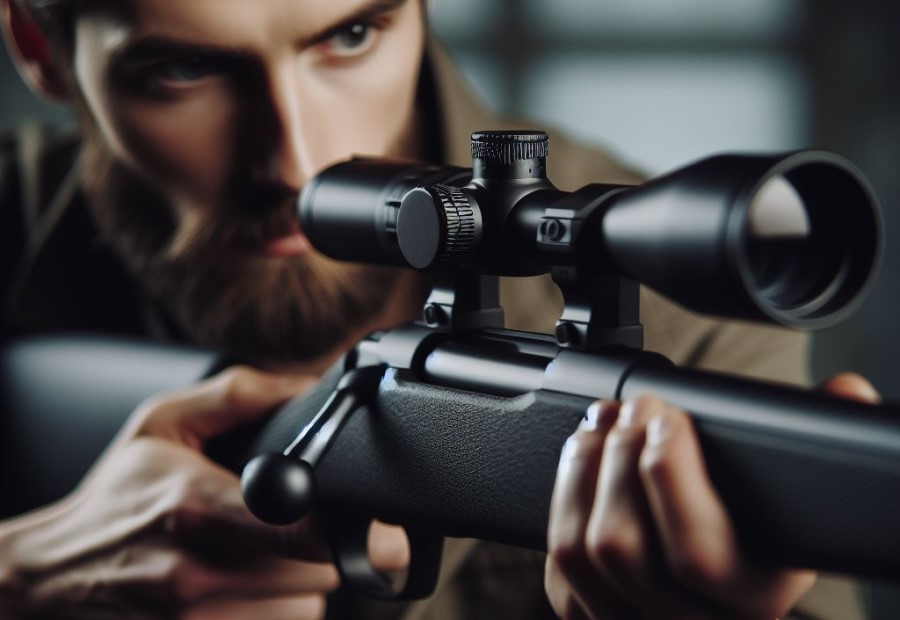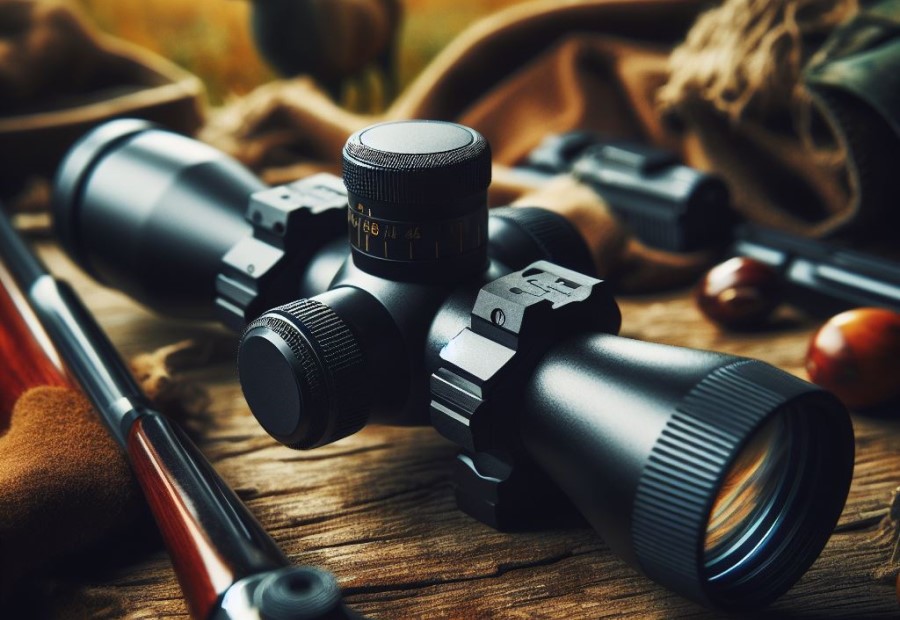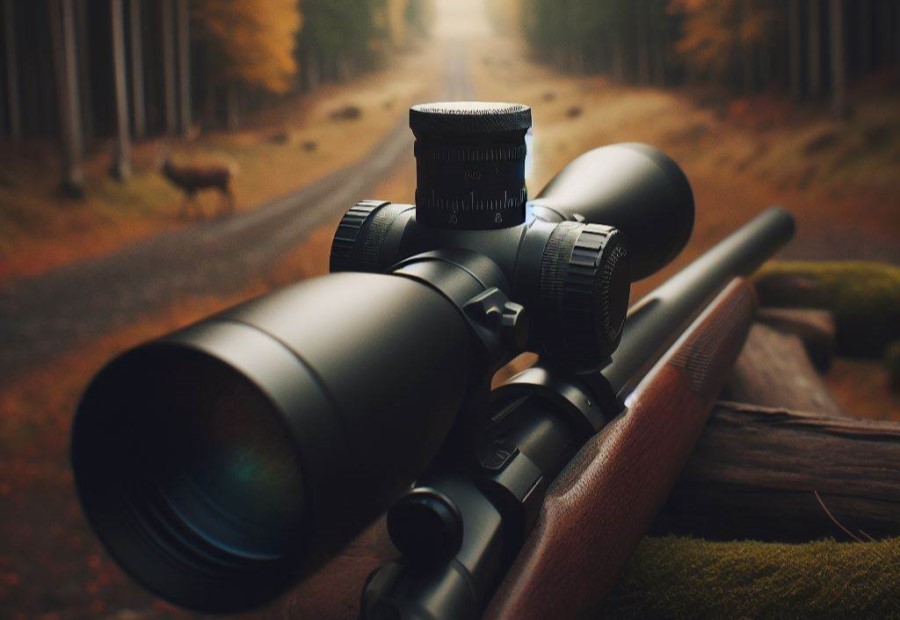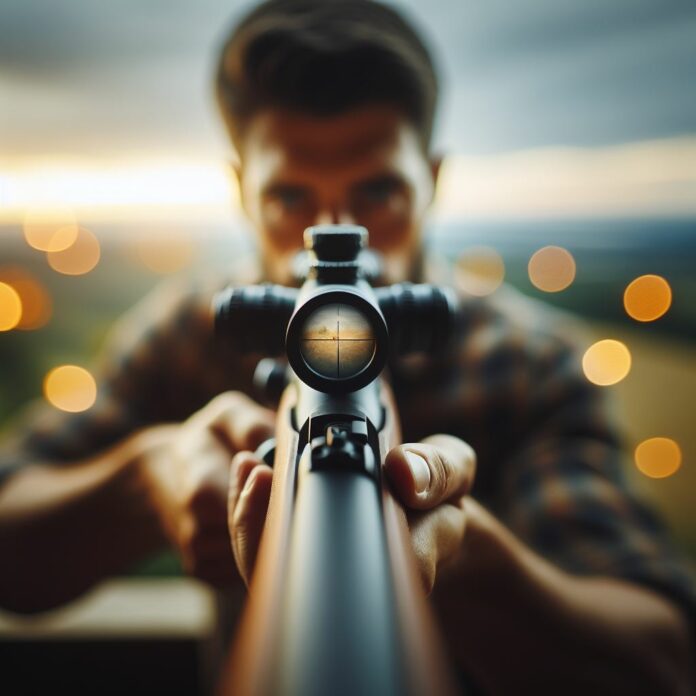The choice of magnification for a hunting scope is crucial for maximizing accuracy and success in the field. Understanding the concept of magnification and considering various factors can help determine the best magnification for your specific hunting needs.
Magnification in hunting scopes refers to the degree to which an image is enlarged when viewed through the scope. It allows hunters to clearly see and identify targets at a distance. When choosing the right magnification, several factors need to be taken into account.
Considerations for reticles and adjustments, such as Mil-Dot or BDC reticles, and elevation and windage adjustments, should also be factored into your decision-making process.
In addition, keep in mind a few additional tips for choosing the right magnification, such as practicing with different magnifications to find the one that suits your shooting style, considering the weight and size of the scope, and seeking expert advice when necessary.
By understanding magnification and considering various factors, you can make an informed decision on the best magnification for your hunting scope, enhancing your accuracy and success in the field.
Understanding Magnification in Hunting Scope

Understanding magnification in hunting scopes is crucial for selecting the right scope for your needs.
When choosing a hunting scope, there are several key points to consider. First, you should look at the magnification range. Hunting scopes typically have a magnification range, such as 3-9x or 4-12x. The first number represents the lowest magnification level, while the second number indicates the highest.
It is important to consider the type of hunting you’ll be doing and the distance at which you’ll be shooting to determine the appropriate magnification range.
In addition to the magnification range, target size also plays a role in selecting the right magnification. Smaller targets may require higher magnification levels, while larger targets may be adequately visible with lower magnification.
Another factor to consider is the field of view. Higher magnification levels decrease the field of view, making it more challenging to locate targets quickly. On the other hand, lower magnification levels offer a wider field of view, making it easier to track moving targets. It’s important to consider the trade-off between magnification and field of view based on your hunting style.
Furthermore, it is important to take into account the lighting conditions you’ll be hunting in. Higher magnification can hinder visibility in low-light situations, while lower magnification allows for a brighter image and better visibility.
Factors to Consider for Choosing Magnification

When it comes to choosing the right magnification for a hunting scope, there are several key factors to consider. From the distance of your target to the type of hunting you’ll be doing, as well as the field of view and light conditions, each sub-section will delve into important aspects that will ultimately guide you towards the best magnification for your needs.
Let’s explore these factors and unlock the secrets to optimal hunting scope performance.
Distance of Target
The distance of the target is a crucial factor to consider when choosing the appropriate magnification for a hunting scope. Different distances require different levels of magnification to ensure accurate aiming and a clear view of the target.
| Distance of Target | Recommended Magnification |
| Short-range (up to 100 yards) | Low to medium magnification (1-4x) |
| Medium-range (100 to 300 yards) | Medium magnification (4-9x) |
| Long-range (300+ yards) | High magnification (9x or higher) |
Selecting the appropriate magnification based on the distance of the target ensures optimal performance and helps maximize accuracy during hunting expeditions.
Type of Hunting
| Type of Hunting | Factors to Consider |
| Big Game Hunting |
|
| Small Game Hunting |
|
| Long-Range Shooting |
|
Field of View
The field of view is a crucial aspect to consider when selecting the appropriate magnification for a hunting scope. It refers to the specific magnification at which the target area can be observed through the scope.
A wider field of view allows for a broader expanse to be visible, facilitating the tracking of moving targets and the detection of game in dense environments. Conversely, a narrower field of view offers greater magnification and finer details, making it ideal for long-range shooting or precise shots.
When contemplating the field of view, it is important to strike a balance that suits your hunting requirements. For hunting in close-range scenarios such as thick forests or brush, a wider field of view proves advantageous for quickly spotting and tracking game.
In situations of medium-range hunting, it may be more suitable to have a slightly narrower field of view in order to maintain a good balance between magnification and situational awareness. For long-range hunting, a narrower field of view aids in focusing on distant targets and executing accurate shots.
Ultimately, the choice of field of view should be based on the specific hunting circumstances and personal preferences. It is recommended to experiment with different scopes and magnifications in order to find the right balance that provides a clear and comfortable field of view for your hunting needs.
| Magnification | Field of View |
| Low Magnification (3-9x) | Wide Ideal for close-range hunting and fast target acquisition in dense environments |
| Medium Magnification (10-14x) | Moderate Suitable for medium-range hunting with a balance between magnification and situational awareness |
| High Magnification (15x and above) | Narrow Best for long-range hunting and precision shots on distant targets |
Light Conditions
When it comes to choosing the right magnification for a hunting scope, considering light conditions is crucial. Different light conditions can greatly impact your visibility and accuracy while hunting. Here are some factors to consider regarding light conditions:
- Adequate lighting: Opting for a magnification that allows for sufficient light transmission is essential. Look for scopes with larger objective lenses, as they can gather more light and provide a brighter image.
- Low-light hunting: If you frequently hunt in low-light conditions, such as dawn or dusk, choosing a scope with a lower magnification can be beneficial. It allows for a wider field of view and brighter image, making it easier to spot targets in dim lighting.
- Bright light conditions: On the other hand, when hunting in bright sunlight, higher magnification scopes can be advantageous. They enable you to zoom in and focus on distant targets with precision.
- Adjustments for varying light: Some hunting scopes come with adjustable features like brightness settings and illuminated reticles. These can be particularly useful when there are drastic lighting changes throughout the day, allowing you to adapt your scope accordingly.
Considering light conditions while choosing the best magnification for your hunting scope ensures optimal visibility and performance in different hunting situations.
The Best Magnification for Different Hunting Situations

When it comes to hunting, finding the right magnification for your scope can make all the difference. In this section, we’ll explore the best magnification settings for different hunting situations.
Whether you’re aiming for close-range targets, tracking down game in medium-range distances, or taking precise shots from long-range, we’ll uncover the ideal magnification options that will enhance your hunting experience. So, let’s dive in and discover the perfect magnification for every hunting adventure.
Close-Range Hunting
When engaging in close-range hunting, there are certain factors to consider for choosing the right magnification on your hunting scope:
- Field of View: Opt for a lower magnification level to ensure a wider field of view. This allows for better situational awareness and tracking of fast-moving targets.
- Distance: Since close-range hunting typically involves targets within a short distance, a lower magnification level is ideal. This ensures easier target acquisition and faster target transitioning.
- Light Conditions: In close-range hunting, lighting conditions can often change quickly. Opt for a hunting scope with good light transmission and a wide objective lens to gather more light, ensuring better visibility in low-light situations.
- Reticle Options: Choose a reticle that is suitable for close-range hunting, such as a simple duplex or red dot reticle. These reticles provide quick target acquisition and are less obstructive when shooting at close distances.
- Ease of Use: Look for a scope with user-friendly features, such as easy adjustments and a forgiving eye relief. This allows for quicker target engagement and increased accuracy during close-range shots.
By considering these factors, you can choose the right magnification for close-range hunting to optimize your shooting experience.
Medium-Range Hunting
When it comes to medium-range hunting, there are several factors to consider when choosing the right magnification for your hunting scope.
- Distance: For medium-range hunting, which typically ranges from 200 to 400 yards, a magnification range of 4x to 12x is ideal. This provides a good balance between target visibility and field of view.
- Type of hunting: The type of hunting you’ll be doing during medium-range hunts can also influence your choice of magnification. If you’ll be stalking prey or hunting in dense brush, a lower magnification between 4x and 8x will allow for better maneuverability and quick target acquisition.
- Field of view: In medium-range hunting scenarios, having a broader field of view is advantageous. A scope with a wider field of view, such as one with a larger objective lens, will allow you to spot and track moving targets more easily.
- Light conditions: Consider the lighting conditions in which you’ll be hunting. If you frequently hunt during low-light periods such as at dawn or dusk, a scope with good light-gathering capabilities and a larger exit pupil will be beneficial.
By considering these factors, you can choose a hunting scope with the appropriate magnification for medium-range hunting, ensuring optimal target visibility and a successful hunting experience.
Long-Range Hunting
Long-range hunting requires a hunting scope with high magnification capabilities to accurately identify and engage targets at greater distances. When choosing a magnification for long-range hunting, there are several key factors to consider.
First, it is important to have a clear understanding of the distance of your target. Long-range hunting typically involves distances beyond 300 yards, so a higher magnification is necessary to clearly see and hit your target.
Next, the type of hunting you will be doing plays a significant role in long-range hunting. If you are engaging in precision shooting or hunting small game from a distance, you will need a higher magnification scope. On the other hand, if you are hunting larger game or shooting in open fields, a slightly lower magnification may suffice.
Field of view is also crucial in long-range hunting. With higher magnification, the field of view decreases, making it harder to locate targets. However, a wider field of view is necessary to track moving targets. Finding a balance between magnification and field of view is essential for long-range hunting success.
Lastly, considering light conditions is important in long-range hunting. Higher magnification scopes tend to gather less light, making it more challenging to see in low-light situations. Opting for a scope with good light-gathering capabilities is advantageous for long-range hunting during dawn and dusk.
Considerations for Reticles and Adjustments
In hunting scopes, Considerations for Reticles and Adjustments play a crucial role in ensuring accurate and effective shooting. Different factors, such as the type of reticle, reticle illumination, rapid adjustments, zero-reset turrets, parallax adjustment, and construction quality, should be taken into account.
Using a suitable reticle type, whether it’s a duplex, mil-dot, or BDC, enhances aiming precision. Illuminated reticles help in low-light conditions. Rapid adjustments and zero-reset turrets simplify windage and elevation adjustments while maintaining accuracy.
Parallax adjustment eliminates distortion at different distances. Lastly, a sturdy and weather-resistant construction ensures reliability in various hunting environments.
Interestingly, the concept of reticles dates back centuries. Ancient astronomers used reticles in their telescopes to measure angular distances between celestial objects accurately.
Over time, this technology evolved, and reticles found their way into hunting scopes, revolutionizing the art of precision shooting.
Additional Tips for Choosing the Right Magnification
When selecting the appropriate magnification for a hunting scope, here are some additional tips to take into account:
- Consider the distance of your typical hunting shots. Higher magnification is suitable for longer-range shots, while lower magnification is better for close-range shots.
- Take into account the lighting conditions of your hunting environment. In low-light situations, a larger objective lens can assist in gathering more light and providing a brighter image.
- Think about the weight of the scope. Higher magnification scopes tend to be heavier, so consider if you are comfortable carrying the extra weight during your hunting trips.
- Consider the field of view. Higher magnification reduces the field of view, making it harder to track fast-moving targets. Lower magnification provides a wider field of view, allowing for easier target acquisition.
Remember to test out different magnifications and see what works best for you and your specific hunting needs. Every hunter and hunting situation is unique, so there is no one-size-fits-all answer when it comes to choosing the right magnification. Trust your own experience and preferences to make the best decision for your hunting scope.
Frequently Asked Questions
What is the best magnification for a hunting scope?
The best magnification for a hunting scope depends on various factors such as the type of hunting, shooting distances, and personal preferences. It is recommended to choose a scope that suits your needs for the majority of the time you spend hunting.
For Midwestern deer hunting and recreational shooting, a relatively low magnification between 3-9x, 4-12x, or 2.5-10x is recommended. For Western big game hunting and recreational shooting, a minimum of 2.5-10x is suggested. If long-range shooting is also a consideration, a scope with an exposed elevation turret is recommended.
What magnification range is suitable for long-range shooting?
There is no one perfect magnification range for long-range shooting as it depends on personal preferences. However, the Razor HD Gen II 4.5-27×56 is popular among PRS (Precision Rifle Series) competitors, but they rarely use it above 18x.
It is important to choose a magnification range that allows you to effectively engage targets at the desired distances while considering factors like mirage distraction, weight, and cost.
What magnification is recommended for mid-range shooting with AR-15’s?
For mid-range shooting with AR-15’s or similar platforms, a recommended magnification range is 1-6x LPVO (Low Power Variable Optic) or a 2-10x tactical scope, depending on the distance. The Viper PST Gen II 2-10×32 FFP (First Focal Plane) is a favorite example. These magnification ranges provide flexibility for engaging targets at various distances and scenarios.
What is the most popular magnification for deer hunting?
The 3-9 power range is the most popular magnification for deer hunting. However, higher magnifications such as 3-12x or 4-12x can provide more versatility for longer-range shots.
The choice of magnification depends on shooting distances, personal preferences, and the specific hunting environment. Tree stand hunting for whitetail deer is common in some areas, while deer drives are popular in others.
Are lower power scopes suitable for deer hunting?
Yes, lower power scopes such as 2X-7X or fixed 4X can be suitable for deer hunting as long as ethical shots can be made. These scopes allow for quicker target acquisition at shorter ranges and can be practical in thick cover or when hunting in dense forests.
However, it is important to ensure that the chosen magnification is appropriate for the specific hunting scenario and the hunter’s shooting capabilities.
What factors should be considered when choosing a hunting scope?
When choosing a hunting scope, several factors should be considered, including the type of hunting, shooting scenarios, magnification distance chart, legal deer hunting seasons, terrain, target size, scope weight, and rifle caliber.
Other considerations include the scope’s optical quality, reticle type, tube diameter, turret options (capped or exposed), low light performance, and overall durability. Additionally, personal preferences and budget should also play a role in the decision-making process.

